Tim Gentles – 2 May, 2014
Wasteland is an exhibition with a great deal of constituent parts, some of which are unwieldy and of varying quality. What the size of show compromises in terms of its coherence, it more than makes up for in the diversity of its responses to a theme that has the potential to evoke an overdetermined affirmation of the masculine on the one hand and inert political correctness on the other.
A new group show at the Gus Fisher Gallery sets out to explore the strained relationship between masculinity and digital technologies. Wasteland is curated by the gallery’s curatorial assistant Tim Wagg and features five artists in the physical gallery space, presented alongside an online publication, two opening night performances and a series of public programmes.
The scope of the show allows for an admirably nuanced treatment of its potentially dubious premise. Thankfully, Wasteland presents artists from a diverse range of backgrounds-not all of them are male, not all of them are from New Zealand and not all are contemporary. In doing so, the exhibition manages to avoid succumbing to a tired analysis of New Zealand masculinity, as well as to an uncritical adoption of ‘masculine’ themes that characterised the recent controversy around Daniel Keller’s all-male group show Liquid Autist at Kraupa-Tuskany Zeidler in Berlin last year.
The exhibition’s title is a reference not so much to-as T.J. McNamara presumes in his review for the NZ Herald-T.S. Eliot’s poem The Waste Land, but to the legend of the Fisher King. In this Arthurian legend, a king is wounded in his groin, signifying a loss of manhood. His impotence affects the fertility of his land, which is reduced to a barren wasteland. Connecting masculinity to its mythological conception, Wasteland recasts the kingdom of man into the virtual realm, suggesting that the internet’s virtual worlds are intimately tied to the necessarily compromised expression of contemporary masculinity and power.
Joseph Waddington presents an elaborate installation consisting of a wooden shed-like structure covered in camouflage netting and monitored inside and out with working CCTV cameras. The purported hideout of anarchist group the Zeal Militia, which was created by Waddington for his Elam graduate show last year, the artist is linked up to the computer and video surveillance systems inside the bunker, which he can access remotely to see what’s going on or print out Zeal Militia propaganda. During the opening Waddington was present on-screen only, interacting with visitors via webcam.
On a desk inside the structure are three computer monitors, one of which displays the live CCTV footage, while another is a working computer station on which you can access the Zeal Militia website for further information. The final screen shows pre-recording video footage, much of it shot on cellphones, that documents the artist hanging out with mates, talking shit, drinking, playing video games, getting stoned. A particular kind of male subjectivity is here evoked, one that in the context of the rest of the installation suggests a potential slippage between the video gamer’s fortress of solitude and a conspiratorial, militarised form of political action.
A more overt reference to gamer culture is found in Alex Laurie’s installation. Comprised of a desk on top of which sit two monitors and the deconstructed parts of a fully functioning PC gaming computer, the work draws on the subculture of ‘battlestations,’ a term originating in online communities such as Reddit referring to one’s gaming rig. Within these communities battlestations are a source of equal parts pride and shame for their users and are shown off with a certain bravado, but an awareness of the sadness of locating your self-worth in the speed of your computer processor often lingers poignantly in the background.
Laurie plays on this self-awareness, constructing a desk made of multiple layers of polymer plastic that resembles the shape of a CPU cooler. Each layer is covered in a layer of grime-dust, energy drink residue and chip crumbs-recalling artist Jon Rafman’s depiction of similarly filth-covered workstations in his Still Life (Betamale) (2013) video. The male gamer’s battlestation stands in for the social and sexual power that he otherwise lacks.
These two works are perhaps the strongest in the show, and while the other three are interesting in their own right, their relationship to the premise feels somewhat more flimsy. For the show’s sole historical work, Wagg has included a print of a work by James Boswell, a New Zealand-born artist who spent most of his life in Britain. While there is some debate about the exact date of the piece, it is believed to have been done sometime shortly after Boswell’s visit to Paris in 1937, during which time he visited brothels and produced numerous works depicting the women who worked there. This piece, Le Sphinx, features three prostitutes with a bus boy. Its ragged black lines give the simple ink on paper work a tense air that is exacerbated by the aloof postures of the women and the bus boy’s unconventional appearance. In an interesting detail, one of these women is modeled from the artist’s wife.
Mason Vincent contributes a sculpture that consists of two stones found near the artist’s house into which are embedded a sheet of stained glass, onto which his girlfriend’s name is written. It’s touching as a tribute to the strength and stability of the artist’s relationship, but doesn’t engage with these power dynamics to the extent that the exhibitions themes would seem to demand.
Melbourne artist Georgie Roxby Smith presents a video work called The Fall Girl. Using the videogame Skyrim, Smith designed what she calls a “death glitch,” where a bikini-clad female protagonist falls repeatedly down a cliff to her death, to be respawned at the top ad infinitum. In subverting the playability of the game, she draws attention to the pleasure derived from being in control of someone else’s-in this case female-body, and suggests a sadistic death drive that lurks behind video games.
The exhibition’s opening night also featured two performances from Jodie Salmond and Josh Rutter. Salmond’s performance took place in front of the Gus Fisher and saw two models in bikinis lounging on top of and beside a crashed, still-smoking police car. Rutter’s performance contained a good deal more subtlety despite its own form of dramatics, with the artist/dancer entering the gallery shirtless, bouncing a basketball and wearing a balaclava, trackpants and running shoes, before using a gun to shoot his iPhone and beginning the dance.
Corresponding with the exhibition is an online publication featuring texts from Cameron Ah Loo-Matamua, NZ Misogynist of the Day, Bridget Riggir and Max Trevor Thomas Edmond. With design from Dan Nash that veers subversively between a gritty, photocopied aesthetic and glossily digitised one, the four pieces shed light on different aspects of the representation of masculinity on the Internet. A particular highlight is Loo-Matamua’s short article on the gendered power dynamics of participation and withdrawal on social media, which argues that online silence no longer functions just as a symptom of oppression but can itself enact “a white supremacist heteronormativising act of oppression.”
The somewhat obvious point to make about Wasteland is that it’s an exhibition with a great deal of constituent parts, some of which are unwieldy and of varying quality. What the size of show compromises in terms of its coherence however, it more than makes up for in the diversity of its responses to a theme that has the potential to evoke an overdetermined affirmation of the masculine on the one hand and inert political correctness on the other. At its best, Wasteland destabilises our sense of what masculinity means both online and off, becoming an object of simultaneous derision and compassion. The wasteland of the exhibition’s title refers to the diminished scope of possibility within gender roles at the end of their tether, which transposed online are subtly transformed, perhaps not for the better, but in such a way that further exposes the cracks in their edifice.
Tim Gentles
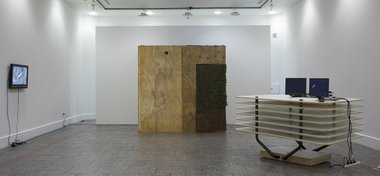
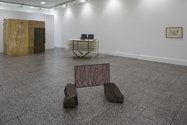
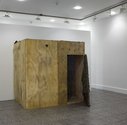
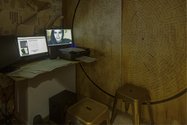
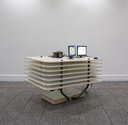
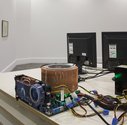


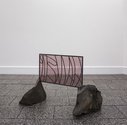




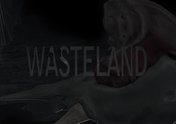
 Two Rooms presents a program of residencies and projects
Two Rooms presents a program of residencies and projects Advertising in this column
Advertising in this column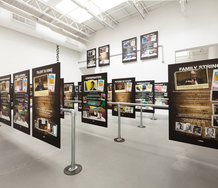
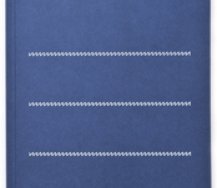
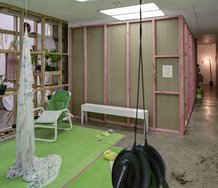
This Discussion has 0 comments.
Comment
Participate
Register to Participate.
Sign in
Sign in to an existing account.